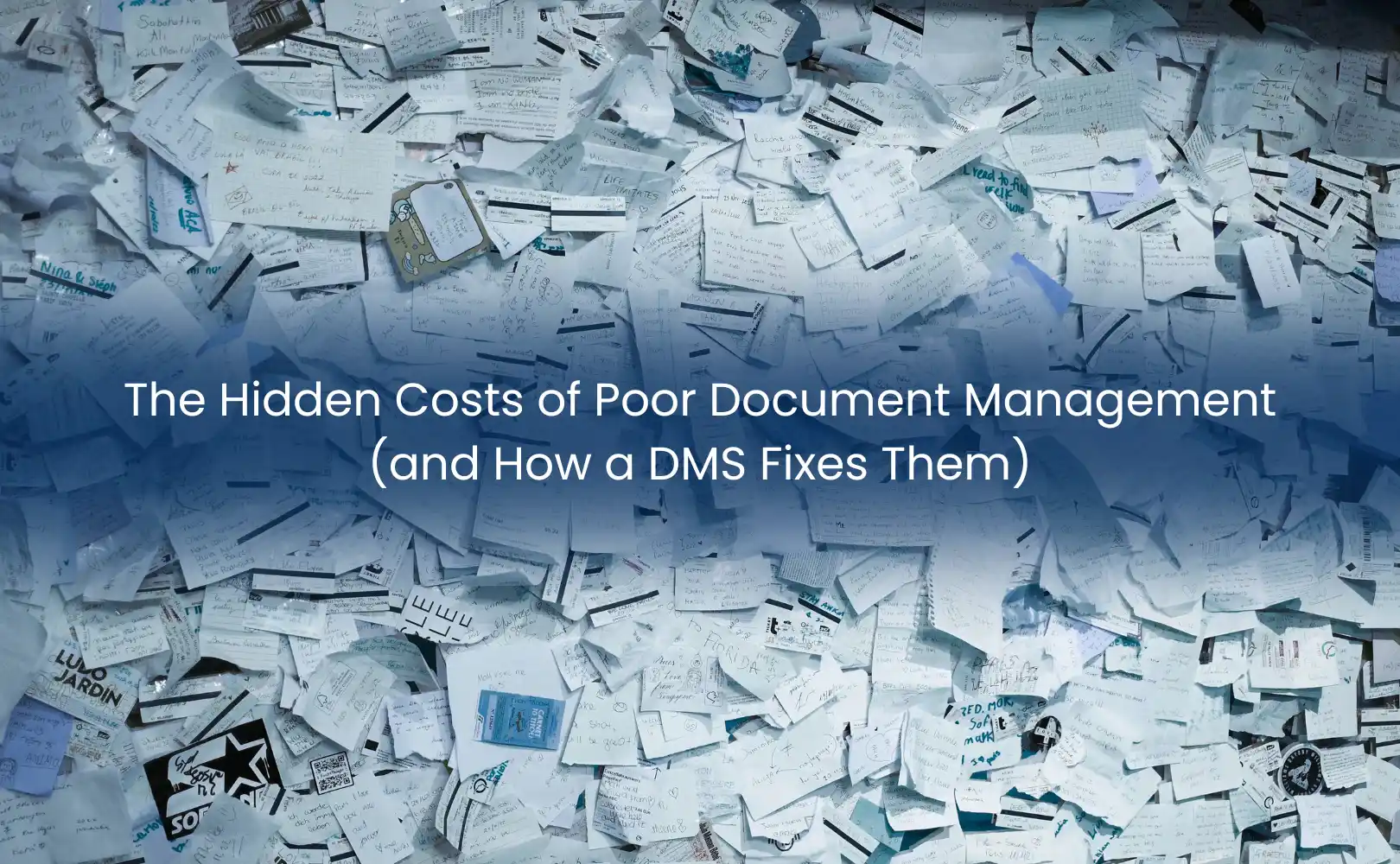Many organizations underestimate the real cost of poor document management. While it may seem like a minor inconvenience, inefficient systems can drain time, reduce productivity, and increase financial and compliance risks. Implementing a modern Document Management System (DMS) addresses these hidden costs while improving workflows, security, and collaboration.
The True Costs of Inefficient Document Management
Inefficient document management impacts organizations in multiple ways:
- Time wastage: Employees spend hours searching for lost or misfiled documents instead of focusing on critical tasks.
- Version control errors: Multiple versions of the same file create confusion and errors, leading to costly mistakes.
- Compliance risks: Poorly managed documents may fail audits or violate regulations, exposing the company to fines.
- Lost opportunities: Delays in approvals or missing contracts can result in lost revenue or partnerships.
- Employee frustration: Frustration with document chaos lowers morale and productivity.
Studies indicate that employees spend up to 30% of their time searching for documents, which translates into significant financial loss over time.
How a Document Management System Reduces Costs
A Document Management System centralizes all documents in a single, secure location, enabling easy retrieval, version control, and compliance. Key benefits include:
- Faster document retrieval: Intelligent search, metadata, and tagging ensure employees find what they need instantly.
- Elimination of duplicate files: AI identifies duplicates, maintaining a single source of truth.
- Streamlined workflows: Automated routing and approval processes reduce delays.
- Improved compliance: Access controls, audit trails, and retention policies help meet regulatory requirements.
By addressing these areas, a DMS transforms documents from potential liabilities into organizational assets.

Financial Impact of Poor Document Management
Poor document management is not just a productivity issue—it has measurable financial consequences:
- Lost billable hours: In professional services, wasted time searching for files directly impacts revenue.
- Rework costs: Errors caused by outdated or incorrect files require time and resources to fix.
- Audit penalties: Non-compliance with legal or industry regulations can result in fines.
- Project delays: Slow approvals and missing documents can delay product launches or contract sign-offs.
Implementing a DMS reduces these costs by creating a transparent, organized, and automated system for all documents.
Enhancing Efficiency with AI and Automation
Modern Document Management Systems leverage AI and automation to further reduce hidden costs:
- AI-powered search: Finds relevant documents using keywords, context, and metadata.
- Automated classification: Automatically categorizes documents for easier organization.
- Smart notifications: Alerts team members when approvals are needed, preventing bottlenecks.
Example: Legal Firm
A legal firm without a DMS may have lawyers manually track contracts and case files. Delays and errors can lead to missed deadlines and penalties. A DMS automates contract routing, flags missing signatures, and ensures all files are securely stored and searchable, saving both time and money.
Example: Marketing Team
Marketing teams often struggle with multiple design and copy versions. A DMS centralizes all campaign materials, tracks revisions, and automates approvals. This reduces errors, accelerates campaigns, and prevents missed deadlines.
Cloud-Based DMS for Cost Efficiency
Cloud-based Document Management Systems provide additional cost-saving benefits:
- No physical storage costs: Digital storage eliminates the need for filing cabinets and paper archives.
- Remote access: Teams can access documents from anywhere, reducing delays and travel costs.
- Scalability: Cloud systems grow with the organization without expensive infrastructure upgrades.
- Automatic backups and disaster recovery: Reduces risk of lost documents due to hardware failures or natural disasters.
Best Practices to Minimize Document Management Costs
To maximize ROI, organizations should follow these best practices:
- Standardize file naming and folder structures: Helps employees find documents quickly.
- Train teams on DMS usage: Ensures consistent adoption and reduces errors.
- Implement retention and deletion policies: Keeps systems organized and avoids unnecessary storage costs.
- Leverage AI and automation: Reduces repetitive tasks and human error.
- Regularly audit security and compliance: Maintains regulatory adherence and protects sensitive data.
Case Study: Financial Services Company
A mid-sized financial services firm struggled with scattered documents across multiple departments. After implementing a cloud-based DMS with AI tagging and automated approvals:
- Document retrieval time dropped by 70%
- Compliance errors were reduced by 60%
- Employee satisfaction increased due to smoother workflows
This demonstrates that a DMS not only improves efficiency but also reduces hidden financial risks associated with poor document management.
Outgoing Resources for Learning
For further insights into efficient document management and digital transformation:
- Harvard Business Review: Improving Workflow Efficiency
- TechRepublic: Benefits of Cloud Document Management
- Gartner: Document Management System Best Practices
These sources provide valuable research and case studies to guide organizations in improving document workflows and collaboration.
Conclusion
The hidden costs of poor document management are significant, from wasted time to compliance penalties and lost revenue. Implementing a Document Management System addresses these issues by centralizing files, automating workflows, improving compliance, and enabling smarter collaboration.
Ready to cut costs and improve efficiency in your organization? Discover how My eOffice eDMS can help your business build a secure, organized, and future-ready digital ecosystem.




